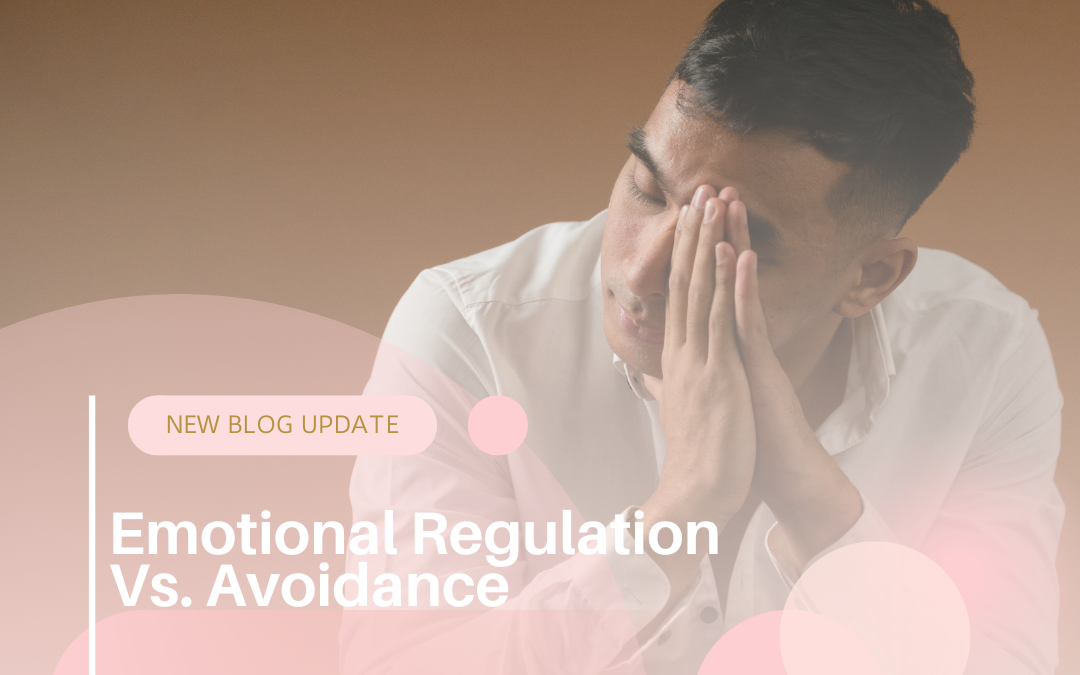In the world of mental health, there’s a lot of talk about emotional regulation—and for good reason. Knowing how to manage overwhelming emotions is key to mental wellness. But sometimes, what we think is regulation is actually avoidance in disguise.
It’s a subtle but important distinction: Are we calming our emotions, or are we cutting ourselves off from them entirely?
Let’s explore the difference—because one builds resilience, and the other can quietly drain our emotional energy over time.
What Is Emotional Regulation?
Emotional regulation is the ability to feel your emotions without letting them control your behavior. It’s not about shutting down how you feel—it’s about responding in ways that align with your values, needs, and well-being.
Regulation can look like:
-
Taking deep breaths during an argument to stay grounded
-
Journaling after a stressful day to process feelings
-
Giving yourself permission to cry, then making a plan
-
Recognizing you’re overwhelmed and choosing rest instead of lashing out
It’s a skill that helps us stay connected to our emotional world without getting lost in it.
What Is Emotional Avoidance?
Emotional avoidance is when we try to suppress, ignore, or escape how we feel—usually because it’s uncomfortable or painful. It may bring short-term relief, but over time, it disconnects us from ourselves.
Avoidance might show up as:
-
Numbing with food, screens, substances, or overworking
-
Minimizing how we feel (“It’s not a big deal”)
-
Constant busyness or distraction to avoid stillness
-
Skipping conversations or decisions that bring up hard emotions
While it’s totally human to avoid pain now and then, chronic avoidance can backfire. Suppressed emotions don’t disappear—they usually resurface as anxiety, irritability, exhaustion, or even physical symptoms.
Regulation vs. Avoidance: How to Tell the Difference
| Emotional Regulation | Emotional Avoidance |
|---|---|
| Acknowledges emotions | Ignores or denies emotions |
| Engages with emotions in a healthy way | Distracts from or suppresses emotions |
| Leads to clarity and calm | Leads to buildup or emotional numbness |
| Temporary discomfort for long-term peace | Temporary peace that often causes long-term distress |
A good rule of thumb: Regulation helps you stay connected. Avoidance disconnects you—from your feelings, your body, or others.
Why the Difference Matters
Avoiding emotions might feel like protection—but in the long run, it can increase stress, impact relationships, and limit our ability to grow. On the other hand, emotional regulation helps us:
-
Make wiser decisions under stress
-
Communicate more effectively
-
Stay emotionally resilient during challenges
-
Build deeper self-awareness and self-trust
How to Shift from Avoidance to Regulation
If you notice you’re avoiding more than regulating, no shame—just awareness. Here are a few gentle ways to shift:
-
Start with naming: “I’m feeling anxious right now.” Labeling emotions decreases their intensity.
-
Make space for discomfort: Even 60 seconds of sitting with a feeling without reacting can build tolerance.
-
Use your body as a guide: Notice where emotions live physically (tight chest, clenched jaw, etc.) and breathe into that space.
-
Create safe emotional outlets: Talk, write, cry, move—find healthy ways to express rather than suppress.
-
Seek support if needed: Therapy can help you understand and regulate emotions safely, especially if they feel overwhelming.
Final Thoughts
Regulation is not about always being calm—it’s about being conscious. It’s giving yourself the grace to feel without drowning and the power to respond without running away.
So the next time you feel like shutting down or numbing out, pause and ask:
“Am I protecting myself right now, or am I avoiding something that needs my attention?”
That one question might lead you closer to emotional freedom than you expect.


Recent Comments